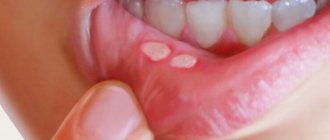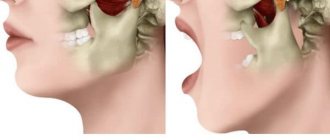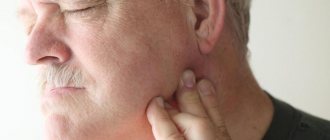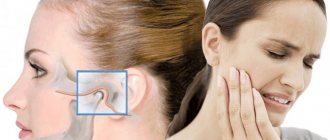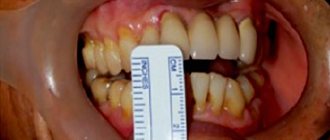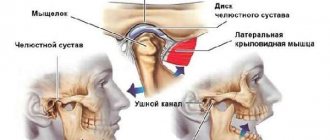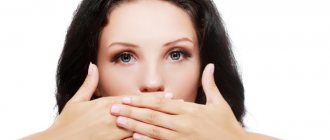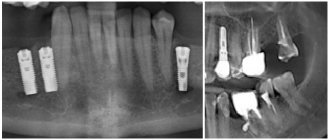Treating jaw arthritis at home
You shouldn’t consider modern medicine to be completely useless, and if your condition clearly shows that you can’t wait any longer, then you’ll still have to go to the hospital.
Rheumatoid arthritis, as a rule, often proves to its owner that it is not to be trifled with. However, one should not forget that traditional medicine also has a whole range of methods proven over generations. At least as auxiliary anti-inflammatory and warming agents, they will go with a bang.
If you are not allergic to certain bee waste products, then ointments containing bee venom and propolis as an antibacterial agent containing a natural antibiotic will serve you very well. To relieve swelling, you can make compresses based on a decoction of medicinal herbs. Iodine mesh also occupies an important place in folk medicine as a warming agent.
Treatment of TMJ diseases
Our clinic employs professional dentists who will perform all the necessary diagnostic procedures, prescribe appropriate treatment procedures and carry them out at the highest level.
In our work, we use only the latest dental equipment, modern materials that meet European quality standards, and innovative technologies that allow us to provide the most effective and painless treatment for TMJ disease .
In addition to standard methods of treating patients with diseases of the temporomandibular joint, we use our own unique methods. Pre-medical examination and treatment of this group of patients is carried out under the guidance of Associate Professor V.V. Bekreev, who has been engaged in scientific and practical research on this disease of TMJ for a long time.
He has developed and successfully applies a high-quality and non-surgical method for the treatment of TMJ dysfunctions.
As for the causes, as well as symptoms and various types of diseases of the temporomandibular joint , we will consider all these issues in detail below. In addition, our employees will provide you with detailed advice regarding the types of services provided and their costs.
If you have been diagnosed with TMJ dysfunction, then it makes sense to contact our specialists to receive comprehensive pathogenetic treatment for TMJ diseases .
[]
Free consultation by phone from 09:00 to 23:00
Doctor med. will consult you. Sciences Prikuls Vladislav Frantsevich. He will answer all your possible questions and suggest a suitable dental clinic near you.
+
Online registration
Arthritis of the jaw joint and dentistry
If arthritis of the jaw joint is caused by one or another dental disease, then no folk remedies can help. If the patient does not want the newly stopped arthritis to return to him in three months, then one way or another he will have to undergo a full-fledged sanitation of the oral cavity.
Treatment of purulent arthritis, which is also encountered in the work of doctors, requires prompt medical intervention through surgery, followed by the installation of drainage and opening of the oral cavity. Such treatment takes at least three weeks of inpatient treatment with various types of therapeutic interventions.
In any case, how quickly or, conversely, slowly the treatment process will proceed, depends only on the patient, who promptly or untimely sought help from a specialist.
TMJ dysfunction: modern methods of diagnosis and treatment
If you notice the above symptoms, you should immediately seek help from a doctor. Due to the diversity of the clinical picture, diagnosis is difficult, so patients can be examined by doctors of different profiles (otolaryngologists, rheumatologists). Generally, a joint collaboration between the dentist and the osteopath is required.
To accurately diagnose temporomandibular joint dysfunction, the dentist will collect anamnesis, conduct a comprehensive examination, palpation and auscultation of the joint area, and assess the degree of mobility of the lower jaw. After this, the dentist can check the condition of the muscles, tissues of the head and neck to determine signs of inflammation. If necessary, a referral to an oral and maxillofacial surgeon may be made for further examination. The symptoms of arthritis and TMJ dysfunction are similar, but the treatment is different, so it is important to differentiate them.
The specialist will prescribe instrumental diagnostic methods (laboratory testing is not required). First of all, this is a three-dimensional X-ray examination and MRI to assess the condition of the jaw joints and surrounding tissues and identify problems with bite. Additionally, the following methods may be prescribed:
- Myorelaxation with the “TENS” device
- X-ray of joints
- computed and magnetic resonance imaging;
- Muscle examination;
- electromyography.
Treatment of TMJ dysfunction in Moscow is practiced by D. Boguslavsky’s dentistry on Tishinka. The clinic is equipped with modern diagnostic equipment. Based on the results of the instrumental examination, a diagnosis will be made and the most appropriate treatment plan will be selected. The main goal is to reduce the intensity of pain, expand functional activity in the joint and improve the quality of life. This can be achieved using conservative methods. The following treatment methods are possible:
- drug therapy. In order to eliminate muscle spasm, swelling and pain - the main symptoms of the pathology, doctors may prescribe muscle relaxants, painkillers or anti-inflammatory drugs;
- wearing a mouth guard or splint. This design is often worn on the lower teeth, which prevents them from rubbing against the teeth of the upper jaw. This can significantly reduce the harmful effects that cause excessive clenching, improper contact and grinding of teeth. The mouthguards fully correspond to the sizes of molars and premolars; they are made from casts; Their task is to relax the muscles and place the joints in the correct position - centric relation
- physiotherapy. In addition to drug therapy, laser therapy, electrophoresis or ultrasound are often prescribed. These are safe methods that are highly effective. A device for transcutaneous electrical neurostimulation is gaining popularity. It generates low frequency electric current, which has a relaxing effect on joints and muscles;
- installation of a bracket system (in case of incorrect occlusion). It is carried out after 2-4 months of occlusion therapy. The duration of wearing braces is determined individually.
- Rational prosthetics to normalize occlusion
Additionally, doctors will tell you about relaxation techniques, which will help you learn to control the tension in your masticatory muscles. Most of the exercises are simple and can be done in any position. You are required to open and close your mouth without closing your jaw for 30 seconds. After this, you need to reach with your tongue first to the right and then to the left cheek. Then open and close your mouth again, and for 30 seconds make circular movements with your tongue (behind your lips), first in one direction, and then in the other direction. The teeth should not touch, the lips should be closed. To have a positive effect, you need such a cycle of exercises for 25-30 minutes at least twice a day.
In advanced clinical cases, when there is no positive result from conservative methods, doctors resort to surgical intervention. The patient can undergo arthroplasty, condylotomy of the head of the mandible and a number of other operations.
Arthritis of the jaw joint: symptoms, treatment, which doctor to see
With such a complex disease, which is jaw arthritis with all the forms and possibilities of its occurrence, several doctors can be identified. It is recommended to contact them if this disease occurs.
Each person faces a choice: long, often protracted and expensive treatment or constant disease prevention, including dental care and timely visit to the dentist.
A dentist is a doctor who has received higher education and specializes in the treatment of diseases associated with teeth, gums, and other problems arising from diseases of the oral cavity. When preventing various forms of jaw arthritis, going to see him once every six months will be the minimum price that can be paid for the absence of this disease.
If, however, preventive measures do not have the desired effect, then another specialist – a rheumatologist – can help you. The latter deals with the elimination of diseases of connective tissues and joints, as well as the development of additional methods for the prevention of these diseases.
Rheumatology, as a highly specialized field of medicine, specializes in inflammatory and degenerative diseases of the joints and systemic diseases of connective tissues. In medical practice, they are sometimes still called collagenoses, although this name itself has long been outdated. On the other hand, rheumatology deals with traumatology-orthopedics and purulent-septic surgery, when, unfortunately, it is no longer possible to do without surgical intervention.
We invite you to read: Arthrosis (osteoarthrosis) of small joints of the feet, fingers (hands) - symptoms, treatment in St. Petersburg
The third specialist who may need to be consulted when treating jaw arthritis is a surgeon. If all possible treatment methods have been exhausted, but there is no improvement, then it is quite possible that the patient suffers from dysfunction of the temporomandibular joint, which can only be eliminated surgically.
To summarize, we note that surgical intervention is an alternative when the patient, having tried all other options, continues to suffer from acute pain, depriving him of his ability to work and live a full life. Observed structural changes in the jaw, including the formation of scar tissue located in the joint area, fracture, bone degeneration or displacement of articular tissues that cannot be restored without surgical medical intervention, suggest a decision to perform surgery.
The first signs of the disease are often discovered by a dentist when visiting a patient for dental treatment or complaining of pain in the jaw. When palpating the jaw muscle, its compaction is noted, and the mobility of the joint is limited. To clarify the clinical picture, the doctor may prescribe conventional or contrast radiography, as well as a computed tomography examination. Depending on the results, treatment may require the participation of several specialists.
If there is a history of diseases that provoke the development of arthrosis of the TMJ, the dentist may refer the patient to specialists of a different profile:
- If the cause is a disease associated with metabolic disorders, an endocrinologist is involved in the treatment.
- If nerve conduction disorders are detected, the help of a neurologist will be required.
- An infectious lesion of the maxillofacial joint or the presence of an inflammatory process localized in other joints (arthritis, rheumatism) is a reason to consult a rheumatologist.
- In some cases, with arthrosis of the TMJ, partial hearing loss is observed, then an otolaryngologist joins the complex treatment.
The jaw clicks and crunches when opening the mouth and chewing: causes and what to do
If your jaw creaks and clicks when you open your mouth, then the first thing you should not do is to straighten it yourself in any way, since the clicking may be associated with injuries to the mandibular joint. It is better to immediately consult a doctor so that he can carry out the appropriate diagnosis.
A crunching sound in the jaw when chewing or talking is just a symptom that may indicate various diseases. The most common reasons are:
- Pathologies of the mandibular joint:
- Dislocation, especially bilateral, when you open your mouth and cannot close it.
- Subluxation, in which there is joint fatigue due to standing with the mouth open for a long time.
- Arthrosis and arthritis after purulent forms of oral diseases: tonsillitis, tuberculosis, gonorrhea.
- Inflammation on the right or left side of the temporomandibular joint.
- Cartilage wear.
- Any other dysfunction that makes chewing difficult.
- Decreased muscle tone:
- Spasm of the jaw muscles on the right or left, for example, as a result of severe stress and overexertion.
- Trismus is excessive muscle tension during daily activities.
- Dental problems:
- Multiple caries - dilapidated teeth violate the height of the bite and lead to its displacement ; the jaw withstood the load for some time, and then cracked for the first time.
- Old or poorly fitting metal dentures.
- Mesial bite, jaw creaks until it is straightened.
- Poor quality filling without taking into account anatomical features.
- Removal of wisdom teeth.
- Other problems:
- Involuntary teeth grinding – bruxism.
- Features of the structure of the jaw joints and ligaments.
- Connective tissue dysplasia.
- Tonsillitis.
- Diseases of the facial nerves, for example, trigeminal neuralgia.
- Any maxillofacial injuries. They are usually the general reason why the jaw clicks when opening and closing the mouth.
Jaw clicking is often associated with the development of the body in adolescents, when the head of the joint is significantly smaller than the joint capsule. In this case, no treatment is required, but traumatic situations should be avoided.
Jaw arthritis
This disease develops as a result of the pathogenic action of microbes. Due to their vital activity, the meniscus becomes thinner or swollen, the tissue fibers become loose, and the articular head itself begins to fuse with the cartilage. This is caused by the accumulation of large amounts of pus in the tissues due to complications of infectious diseases and inflammatory processes after injuries.
If a person’s jaw hurts and clicks even with slight movement, it is visually displaced and swollen, then this may indicate developing arthritis. You should not wait for an increase in temperature, deterioration in hearing due to the development of a purulent form and other serious symptoms; you must immediately visit an orthodontist or maxillofacial surgeon.
Mesial bite
Jaw problems can occur due to a malocclusion, when the lower jaw is pushed forward and the lower front teeth cover the upper row. Most often, the problem can be eliminated by installing braces, but everything is individual.
Neuralgia
Nerve damage often causes characteristic pain. There are neuralgia:
- Trigeminal nerve. The lesion is unilateral, so the joint in the jaw clicks and clicks only on the right or left side, the pain worsens at night.
- Glossopharyngeal nerve. Symptoms include painful attacks with increased salivation, which intensifies when talking and eating.
- Superior laryngeal nerve. The pain is localized in the lower jaw, but can spread to the entire face or chest, and is activated during the process of yawning, chewing and blowing the nose.
Injuries
After mechanical damage, the jaw often knocks and crunches when opening the mouth. If these clicks are accompanied by pain, then its intensity is directly proportional to the severity of the injury. The following damages are distinguished:
- Soft tissue bruise without bone fracture. Accompanied by swelling around the affected area, bruising and acute pain.
- Fracture. Symptoms: loss of integrity, displacement of parts of the jaw, swelling near the site of impact and severe pain when closing the mouth.
- Dislocations. Most often, such injuries occur in patients with gout, arthritis, and rheumatism. There are habitual and acute dislocations. The former arise due to problems with the activity of the articular apparatus, the latter must be treated by restricting mobility through orthodontic fixation.
Connective tissue dysplasia (CTD)
Some diseases that cause jaw clicking have hereditary causes. DST is a pathology of the development of connective tissue of the embryo and infant, leading to disruption of homeostasis at all levels of the body, including the temporomandibular joints.
With the disease, a defective bone frame is formed. But the facial muscles involved in chewing do not have developmental problems, and therefore press with standard intensity, which leads to damage to the articular elements due to reduced strength properties.
Tonsillitis
Inflammatory processes, including in vegetative form, in the tonsils and adenoids can cause the jaw to crack. Characteristic sounds occur when the tonsils are greatly enlarged, when swallowing becomes difficult. The most effective option in this case is to perform a tonsillectomy.
Symptoms
All pathologies associated with the appearance of knocking when moving the jaws are characterized by almost the same symptoms.
Jaw clicks
Clicking sounds that occur when opening and closing the mouth can be classified. For example, depending on how many times the jaw crunches when chewing, they can be single or multiple.
They are also divided by sound intensity:
- Strong, when the crunch is heard by everyone around.
- Medium, when a person opens his mouth, and the creaks are heard only by him.
- Weak. They occur at the very beginning of the pathological process and are not noticeable even to the patient himself. Often such creaking is confused with ordinary sounds when chewing food.
Sometimes clicks from both sides are classified depending on the position of the lower jaw during the click:
- with incomplete opening of the mouth;
- when the mouth opens to the middle;
- when wide open;
- when they start chewing food;
- when the jaws close.
Additional symptoms
In addition to the characteristic clicking sound, headaches, difficulty moving the jaws (limited amplitude), tinnitus, swelling and redness of the inflammation site, discomfort during chewing food and talking, radiating into the ear, may appear.
Sometimes the jaw not only chatters, it also jams, and the submandibular lymph nodes become enlarged.
It is better to consult a doctor not after these symptoms occur, but at the very beginning, when clicks in the jaw when opening the mouth only begin to appear.
Initially, you can make an appointment with a regular dentist, and he will already refer the patient to an orthodontist or gnathologist, but not all clinics have the latter specialist.
Treatment is carried out based on diagnostic data, and can only be carried out by a specialist. Self-medication at home without specifying the diagnosis (application of warm compresses, therapeutic exercises) can lead to irreversible consequences, including death.
Diagnosis
Diagnosis of the exact causes of jaw clicking includes a number of measures:
- palpation on both sides of the temporomandibular joint;
- anatomical studies of occlusion;
- neurological diagnostics, including the trigeminal nerve;
- Ultrasound and x-ray of the area with pathology and tissues near it;
- a general blood test, which is required to check the absence of inflammatory diseases;
- facial electromyography;
- dental examination, even if not a single tooth hurts;
- MRI is prescribed in advanced cases and when there are no metal structures installed in the patient’s oral cavity;
- collecting information about what the patient complains about when the jaw cracked for the first time.
Treatment is prescribed based on the diagnosis. In some cases, medication will not be required, but in others, urgent hospitalization will be indicated. In the presence of inflammatory processes, antibiotics are prescribed.
Drug treatment
Painful sensations that often accompany jaw clicking can be eliminated with the help of analgesics, but only as directed by a doctor:
- Ketanol.
- Ibuprofen.
- Analgin.
The use of glucocorticosteroids is justified for the treatment of arthritis. They help to quickly stop the inflammatory process by suppressing the immune response. Such drugs include:
- Prednisolone.
- Hydrocortisone.
- Medrol.
To restore cartilage tissue, various chondroprotectors are used, for example, Teraflex and Chondroitin.
Physiotherapy
Physiotherapeutic procedures are classified as conservative methods of treatment. They help with muscle-joint dysfunctions and jaw diseases. The following methods of such therapy are distinguished:
- Fluctuarization in the area of the masticatory muscles. Has an analgesic effect.
- Anti-inflammatory microwave radiation on the joint.
- Infrared laser magnetic therapy. Relevant if the jaw is already wedged, it restores the acid-base balance.
- Electrophoresis with drugs, which reduces the inflammatory process, improves tissue metabolism and blood supply. The most commonly used drugs are novocaine or dimexide.
For the best effect, physiotherapy should be combined with massages, myogymnastics and psychotherapeutic training.
Surgery
In case of serious injuries and pathogenic formations, surgical intervention is indicated for patients:
- Invasive. A medicinal substance is injected into the joint under pressure using two needles, thereby washing out harmful microorganisms and healing the tissue.
- Arthroscopy. Targeted removal of scars and adhesions through surgical punctures with a scalpel.
- Open operations. Replacement of the inflamed parts of the joint is carried out through an incision in front or behind the auricle.
- Articular head prosthetics.
- Retroaricular technique. Fixation of the joint with special internal screws.
Complications
If the jaw clicks only when the mouth is opened wide, usually no one is in a hurry to see a doctor. However, if you do not pay attention to this symptom, serious complications may arise in the future:
- dislocation to the right or left and complete deformation of the affected joint on one or both sides;
- articular disc tear;
- thinning of tooth enamel due to increased stress on it;
- development of rheumatism;
- tooth loss;
- generalization of infection.
Prevention
To avoid serious problems with the jaws, preventive measures should be taken in advance:
- correct abnormal bite;
- treat caries in the early stages of occurrence;
- install fillings and prostheses taking into account anatomical features;
- chew food on both sides;
- promptly treat inflammatory diseases of the oropharynx;
- avoid stressful situations.
If your jaw starts to click when chewing, you can’t do anything on your own - you should immediately contact a doctor. Dental pathologies cannot be treated independently at home.
Source: https://StomaGet.ru/bolezni/chelyusti/shhelkaet-i-hrustit-chelyust-pri-otkrytii-rta
Signs of jaw arthritis
If inflammation of the temporomandibular joint is suspected, symptoms that confirm the diagnosis may include the following:
- throbbing pain. Its intensity increases sharply if the patient moves the jaw in any way, or when pressing on the chin;
- swelling of the joint area. If arthritis also affects the soft tissue around it, the epithelium in this place may turn red; it is not possible to fold it;
- limited mobility: the patient is sometimes unable to open his mouth wider than half a centimeter, chewing is difficult;
- Symptoms of inflammation of the mandibular joint also include a decrease in hearing: due to increasing swelling, the ear canal gradually narrows. There is a feeling that the ear is blocked.
Often, with inflammation of the mandibular joint, the symptoms are complemented by a rise in temperature - local in the affected area or general. Chills and dizziness are sometimes observed. Signs of the disease can appear on one side of the face (this is typical for osteomyelitis) or on both - this course is typical for jaw arthritis, which developed as a result of sepsis, hematogenous spread of infection and autoimmune diseases.
In later stages, the symptoms are complemented by crunching or clicking in the joint. His stiffness becomes more noticeable and is especially noticeable in the morning or after a long day's rest. The severity of stiffness weakens after a minute “warm-up” - active work with the jaw. It should be noted that at this moment the pain syndrome is especially strong.
Elderly people and parents of children who have not reached puberty should pay particular attention to the earliest signs of problems with the jaw joint. It is these two categories of the population that are especially likely to develop temporomandibular joint arthritis. In children, the tendency towards it is explained by the fact that the processes of bone tissue formation are not completed and proceed at a very fast pace. In addition, children are at high risk of accidentally injuring their jaw during normal childhood play.
We suggest you read: Bruised tailbone from a fall, what to do, symptoms, treatment and consequences
Elderly people usually already have systemic chronic diseases, and their immune system is weaker.
Causes of the disease
There are many causes and factors that can provoke TMJ dysfunction. Among them:
- Birth injury. At birth, a lot of pressure is placed on the baby's skull. In some situations, the resulting distortions do not self-correct over time. Changes in the shape and symmetry of the structures of the skull entail membranous and fascial tension in the head, often leading to scoliosis of the spinal column.
- Skull trauma. It can lead to displacement of the skull bones, increased tone of the masticatory muscles, and strong closure of the teeth on both jaws. As these factors progress, they will lead to TMJ dysfunction.
- Incorrect occlusion. The pathology of occlusion (occlusion) can often be caused by the absence of chewing teeth, improper eruption of wisdom teeth, orthodontic problems, disruption of the normal localization of the upper and lower jaw and improper prosthetics. As a result, a person experiences pathological abrasion of molars and premolars, a decrease in the height of the alveolar process, impaired movement of the incisive and maxillary bones, swelling of the compressed mucosa, impaired nasal breathing and narrowing of the airway lumen. All these problems are accompanied by the development of dysfunction of the temporomandibular joint.
- Errors in orthodontic treatment. The body begins the process of adaptation when the relative position of the skull bones is disturbed. A change in bite, height and number of molars and premolars negatively affects the entire body. When tilting the upper jaw, severe pain occurs, trigeminal neuritis, increased wear of molars and premolars, and gum recession may occur. Deviation of the position of the lower jaw significantly harms the temporomandibular joint. The result is dysfunction and dislocation.
- Scoliosis of the spine. Ascending postural causes of the development of the disease are often associated with pelvic instability or instability of the sacroiliac joint. Postural instability spreads upward, causing changes in the functioning of the joint. Inside the vertebral ridge there is a dense meninges lining the cranial cavity. It is a single, inextensible structure that is extremely important for the formation of a direct connection between the skull and the spinal column. The main fusion occurs in the area of the sacrum and occipital bone. There is a close connection between them. An unnaturally stretched dense meninges leads to malfunctions of the occipital bone and sacrum. Dysfunction in the pelvis accelerates upward, which provokes the appearance of painful sensations in the neck, thoracic and lumbar spine, and negatively affects the function of the TMJ.
At the same time, there is a psychogenic theory of the occurrence of the disease. She examines the pathogenesis of the disease based on the fact that the factors that provoke dysfunction are deviations in the activity of the central nervous system. They are accompanied by dysfunction of the muscles and kinematics of the joint.
Diagnostics
In principle, a diagnosis of “jaw arthritis” can be made based on severe symptoms. However, the doctor’s goal is to establish the reasons for its development, only then will treatment of the jaw joint be successful. Therefore, a whole medical consultation may be needed, which may include:
- orthopedist in tandem with a traumatologist. Their examination is a priority, since it is necessary to exclude a fracture of the jaw, damage to cartilage or ligaments;
- dentist: his task is to make sure that jaw arthritis is not a complication of a diseased tooth;
- an otolaryngologist checks the condition of the ENT organs to exclude from the list of possible causes of diseases of the nose, throat, ears and accompanying sinuses;
- An infectious disease specialist will be needed if inflammatory processes of a viral or bacterial nature are detected in the body. In case of tuberculosis, a consultation with a phthisiatrician is required, and in case of skin rashes and unfavorable test results, the patient will be referred to a dermatovenerologist;
- A rheumatologist will prescribe treatment if the jaw is affected by rheumatoid arthritis.
If during the examination there are suspicions of problems with the trigeminal nerve, a visit to a neurologist will be mandatory.
One of the first instrumental studies will be radiography. This technique has a fairly low accuracy, but it is inexpensive and allows you to determine whether a fracture has occurred. To identify the presence/absence of microcracks, tomography, computed tomography or magnetic resonance imaging is prescribed.
Traumatic inflammation
The first thing that is required is to ensure the immobility of the affected joint. This should be done by a professional traumatologist. The patient's jaw is fixed with a sling-shaped bandage equipped with a special plate that prevents the jaws from closing. This allows the victim to eat food, even if only in liquid form.
Cold compresses are recommended to prevent swelling; At the same time, the doctor will prescribe medications that prevent the development and spread of inflammatory processes. In most cases, systemic administration of painkillers is also required, since injuries are associated with a gross violation of tissue integrity, which can lead to painful shock.
“Doctors are hiding the truth!”
Even “advanced” joint problems can be cured at home! Just remember to apply this once a day...
{amp}gt;
After the swelling subsides, physical therapy will be added to the medicinal treatment methods, designed to prevent the affected joint from fusing into a fixed conglomerate. Physiotherapy is also used: UHF, electrophoresis, diadynamic therapy, phonophoresis with hydrocortisone.
The jaw clicks when opening the mouth and chewing, it hurts and crunches - which doctor should I consult?
Most often, people associate joint problems with pain and crunching in the knees, wrists, elbows and ankles. Few people realize that clicks near the ear and discomfort during chewing, talking or yawning are caused by disturbances in the functioning of the mandibular joint.
During evolution, the human lower jaw became more mobile, which made it possible to master speech. Along with this, the risks of dislocations and subluxations of the mandibular joint have sharply increased. Treatment of these pathologies includes a variety of methods - from applying a splint to installing orthodontic structures.
About the structure of the lower jaw and joint
Of all the cranial bones, the lower jaw is the only movable element. The mobile horseshoe bone allows a person to open his mouth wide and helps to make various sounds. The lower jaw is driven by muscles that cause the articular head in the bursa to rotate. Normally, the rotation of the temporomandibular joint (TMJ) is silent.
INTERESTING: why can the lower jaw shrink?
Sometimes patients note that normal rotation of the jaw is accompanied by clicking or clattering.
As a rule, the sound is heard on the left side of the face, but the crunching can occur on both sides. Clicking is not always accompanied by pain and discomfort; sometimes this symptom occurs separately.
A crunch near the ear always indicates a pathology in the functioning of the temporomandibular joint.
The head can extend beyond the glenoid cavity and then return to its original place. A dislocation or subluxation is an abnormal displacement of a joint, in which the cartilaginous layer loses its connection with the articular head. The meniscus, moving after the head, bends and then sharply returns to its original position with a characteristic click (look at the video).
If painless clicking of the jaw occurs on the left side when opening the mouth, many patients try not to pay attention to extraneous sounds. It is important to understand that such a symptom indicates a serious pathology of the TMJ, which sooner or later will lead to serious complications.
Why does crunching and clicking appear?
You can hear your jaw clicking while communicating with your interlocutor or while eating. People most often experience this phenomenon when they yawn. The cheekbone clicks or knocks for a number of reasons, the main ones being:
- prolonged exposure to stress or severe shock (psycho-emotional stress leads to muscle spasm, resulting in joint displacement);
- loud singing or speaking in public (sudden movements of the jaw joint provoke a slight displacement of the head relative to the glenoid cavity);
- a doctor’s mistake when applying prosthetics or filling teeth (the load on the ligaments is redistributed due to malocclusion);
- long-term dental procedures (the patient is forced to remain with his mouth open for a long time, which leads to overstretching of the meniscus);
- trauma (the most common cause contributing to the appearance of disturbances in the functioning of the TMJ in more than 50% of patients);
- malocclusion (with mesial occlusion, when the lower jaw is strongly pushed forward, crunching or noise behind the ear may be accompanied by pain) (more details in the article: the lower jaw is pushed forward: how can this defect be corrected?);
- increased physical activity (during training, muscles and ligaments are overstrained, which leads to joint displacement);
- bruxism (constant uncontrolled jaw movement during sleep);
- multiple caries (when chewing, the load is redistributed onto healthy teeth, ligaments are stretched, and the cartilaginous layer of the joint is loosened);
- arthritis (an inflammatory process affecting the TMJ, causing severe pain and crunching when opening the mouth);
- heredity;
- neuralgia of the facial nerve (the joint on the right or left side takes over all functions);
- inflammatory processes in the neck, parotid or salivary glands.
Which doctor will make the diagnosis?
When the jaw crunches when opening the mouth, this indicates a pathology of the TMJ. This phenomenon should not be ignored by the doctor. First you need to contact an orthodontist. He will conduct an examination and make a preliminary diagnosis. It is not easy to identify the exact cause of the disease; specialists such as a dentist, surgeon, or gnathologist will help with this.
Treatment of pathology
Pathologies caused by disturbances in the functioning of the TMJ require an integrated approach. The desired therapeutic effect can be achieved through a combination of dental treatment, medications and physical therapy.
It is not uncommon for several doctors to treat one patient. Before starting therapy, they determine the reason why your jaw is cracking. Since there are many provoking factors, the approach to treatment in each individual case will be different.
If it's arthritis
With arthritis, the jaw joint hurts and creaks. Infection is the main reason why the disease develops. Pathogenic microorganisms penetrate deep into the joint, where they begin to actively multiply. Over time, the inflammatory process leads to the destruction of joint tissue.
Sometimes arthritis develops after an injury; this is associated with blood entering the joint. The main thing that needs to be done when the head has moved beyond the glenoid cavity is to ensure maximum rest for the joint.
The patient will wear a sling bandage for the first few days. During this period, he must follow a special diet, including exclusively liquid meals.
Anti-inflammatory drugs and antibiotics help eliminate inflammation and fight infection. In severe cases, glucocorticosteroids (Hydrocortisone, Prednisolone) are used. The patient is also referred for physiotherapy. Therapeutic gymnastics and massage will help you recover faster.
Doctors increasingly began to use botulinum. The modern method allows you to relieve symptoms and prevent the development of degenerative changes in the joint by injecting botulinum toxin directly into the site of inflammation.
Arthritis often leads to the development of complications. If the inflammation progresses to the stage of suppuration, the help of surgeons is required. The doctor performs the operation in a hospital setting, then the patient is prescribed a course of antibiotic therapy.
For arthrosis
Arthrosis of the jaw joint is a chronic disease of the skull bones, in which degenerative and atrophic changes in cartilage tissue occur. The disease leads to limited mobility of the affected joint.
Self-medication can aggravate the situation, so you should not do this. Treatment should be carried out under the supervision of a physician. The following will help alleviate the patient’s condition, relieve inflammation and pain:
- Anti-inflammatory drugs (Diclofenac, Ibuprofen, Ketorol, etc.). For gastrointestinal diseases, Omeprazole or Lansoprazole is additionally prescribed. These medications are designed to reduce stomach acidity.
- Vitamins (Ascorbic acid, Cholecalciferol, etc.).
- Hyaluronic acid (promotes the restoration of cartilage tissue).
- Anesthetic intra-articular injections (Disprospan is injected once every six months).
- Hormonal drugs (prescribed to women during menopause).
In case of dysfunction of the temporomandibular joint
When the functions of the TMJ are impaired, patients often experience headaches. With these symptoms, they usually turn to a therapist or neurologist. Specialists carry out treatment unsuccessfully, and the patient continues to experience pain. You can get rid of noise when chewing only if joint pathology is identified.
An orthodontist, gnathologist or dentist, having found out the cause of the disease, prescribes appropriate treatment. At the initial stage, anti-inflammatory drugs will help get rid of pain and inflammation.
In other cases, it is necessary to install a fixing splint that limits the movement of the joint. With the help of a mouthguard, the jaw gradually returns to the desired position.
Surgery is recommended for patients with severe TMJ pathologies.
Malocclusion
Sometimes crunching and clicking sounds when opening the mouth appear as a result of previous dental treatment.
After tooth extraction, due to errors in prosthetics or poor-quality filling, the bite is disturbed. In this case, you can quickly fix the problem.
To restore the dentition, it is necessary to change the prosthesis, build up too worn teeth, or install a prosthesis to replace a lost tooth.
If bite defects were caused by other reasons, then treatment measures will be aimed at restoring the dentition by installing braces or other orthodontic structures. The teeth will gradually take the desired position. Treatment may take several years.
Prevention of problems with the lower jaw
No one is immune from problems with TMJ. If you visit the dentist at least once every six months for preventive purposes, the risk of diseases of the teeth and jaw joints will be minimized.
If there is a need for prosthetics, you should not skimp on them. High-quality prostheses will last longer and relieve joint diseases.
In case of injuries to the maxillofacial system and infectious diseases, you must visit a doctor. Timely treatment will help avoid complications.
When your jaw clicks or rustles, you don’t need to endure pain and discomfort and relieve the symptoms yourself by taking painkillers and folk remedies. Treatment at home gives a temporary effect, while the inflammation in the joint only intensifies.
If there is a predisposition, then as a preventive measure for problems with the lower jaw, you need to limit the consumption of solid foods (nuts, crackers, etc.). To avoid relapse, do not open your mouth too wide when yawning, laughing or singing.
Source: https://AzbukaZubov.com/stomatolog/okklyuziya/shhelkaet-chelyust-pri-otkrytii-rta.html
Infectious inflammation
If the cause of arthritis in the jaw joint is the action of harmful organisms, the main focus of therapy is treatment of the provoking disease. Until it is clear which aggressor started the inflammatory process, the doctor prescribes antibacterial drugs with a wide range of influence. When the pathogen is identified, the medications are replaced by those that most effectively fight the specific disease.
Non-steroidal anti-inflammatory drugs are also included in therapy, whose task is to counter the spread of inflammation. They are often combined with antihistamine complexes to make the swelling go down faster.
If conservative treatment is ineffective (usually this happens in the later stages of the disease), surgery is prescribed. The operation is performed under general anesthesia, the cavity is cleaned of pus and a drainage is installed to drain the released fluids from the tissues. Postoperative treatment consists of painkillers, anti-inflammatory and antibacterial drugs.
Treatment
When arthrosis of the maxillofacial joint is detected, a comprehensive therapy of therapeutic measures is prescribed, which includes dental, therapeutic, orthopedic and orthodontic measures.
Drug therapy
When treating arthrosis of the jaw joint, it is impossible to do without the use of medications that help improve metabolism not only in the diseased joint, but throughout the body. They reduce inflammation and eliminate acute signs of the disease. To make it easier for patients to endure the period of illness, it is necessary, first of all, to eliminate the pain syndrome. For this purpose, analgesics are prescribed, which are injected into the cavity of the diseased joint or used orally. Basically, the following drugs are prescribed for oral administration:
In the case when arthritis develops against the background of an infection, antibiotics can relieve the inflammatory process. The doctor prescribes medications taking into account the individual characteristics of the patient’s body. If the causative agent of the disease can be accurately identified, narrow-spectrum antibiotics are prescribed. If this cannot be done, then broad-spectrum drugs are prescribed that can eliminate all pathogens.
Unauthorized use of such drugs is strictly prohibited, as it can do more harm than good.
If arthrosis has developed as a result of injury, the patient may be prescribed non-steroidal anti-inflammatory drugs:
In severe cases of the disease, accompanied by an inflammatory process, glucocorticosteroid drugs such as Prednisolone, Hydrocortisone and Methylprednisolone are prescribed.
Read about recovery from purulent bursitis of the elbow joint here.
To speed up the recovery process of a diseased joint, chondroprotectors are prescribed. The use of these medications can also prevent the development of arthritis. The following medications are effective:
Warming and anti-inflammatory ointments are used as local treatment:
The complex of therapeutic therapy also includes vitamin complexes and microelements:
During drug therapy, it is important to follow the dosage regimen and dosage of the drug. Even if symptoms decrease, you cannot stop treatment on your own.
Jaw structure correction
To ensure an even load on the jaw joints, a number of measures must be taken. For this purpose, orthopedic and odontological treatment methods are used. Such treatment methods include:
- correction of malocclusion;
- teeth grinding;
- installation of fillings, crowns;
- restoration of the shape of the dentition;
- dental prosthetics.
For the same purposes, patients are recommended to wear special dental structures, including mouthguards, palatal plates, and braces. If necessary, devices and splints are installed that limit mouth opening.
Rheumatoid inflammation
This type of jaw arthritis is mostly treated by a rheumatologist, although further guidance may be needed from other doctors. Drug treatment is mainly limited to relieving inflammation and pain; Physiotherapeutic procedures act as a supporting and accelerating effect.
But therapy is not limited to these areas only, since with rheumatoid arthritis there is a very high probability of developing ankylosis of the joint, which threatens partial (and sometimes complete) loss of its mobility. This phenomenon is explained by pathological growth of tissue in the articular cavity; there is no gap left for rotation of the joint parts.
We invite you to read: Spinal stenosis in the lumbar region: what is it? Treatment
Experts in physical therapy consider four exercises to be the most effective:
- the chin is pressed with the palm from below, the mouth slowly opens, overcoming resistance. With the same speed and the same pressure, the mouth closes;
- the chin is grasped with the fingers, the jaw rises and falls. Your hand should press in the “down-back” direction;
- fingers press on the side of the jaw; the chin moves left and right. Then pressure is applied from the opposite side, and the exercises are repeated;
- the chin is pushed back by the hand; The jaw should be pushed forward as much as possible.
Each exercise is repeated three times. When performing them, pain may begin; if they are strong, you should do fewer approaches per day, reduce the intensity of pressure, or even take a break for several days. If the pain does not go away, the supervising doctor should be notified about the condition of the jaw.
It is worth making one more clarification. Like other diseases, inflammation of the jaw joint can go from acute to chronic. In this case, after the onset of a period of remission, the main emphasis in treatment is on physical therapy. In addition to the already mentioned electrophoresis and UHF, mud therapy and paraffin therapy provide good therapeutic results.
Possible complications
If you ignore the symptoms of inflammation of the jaw joint and do not start treatment on time (or replace it with amateur actions), then there is a risk of developing severe complications.
If arthritis of the jaw is of infectious origin, the inflammation will not go away on its own. The pus that accumulates during the process can lead to the “melting” of the components of the joint - cartilage, capsule, ligaments. As a result, things can reach the point of complete immobilization of the joint.
With hematogenous and contact spread of microorganisms, a patient with jaw arthritis may develop meningitis. This is a very dangerous disease, manifested by severe headaches with a rise in body temperature to dangerous levels (400C and above), fainting and photophobia. Failure to take urgent and professional measures leads to the death of a person.
Phlegmon of the temporal region. This is the name for inflammation accompanied by pus formation. It occurs in soft tissues and requires immediate surgical intervention. The root cause of phlegmon may well be jaw arthritis, but without additional circumstances it alone does not lead to the disease. The development of phlegmon also requires a persistent, long-term weakening of the immune system, which is often found in older people.
Inflammation of the jaw joint, left without proper treatment, can also lead to sepsis - the penetration of pyogenic bacteria into the circulatory system. Through it they are transported to all points of the human body. The consequence is a massive inflammatory process, manifested by weakness, pathologically excessive sweating, increased breathing and heart rate, and loss of consciousness. The most terrible outcome of the disease is septic shock, which in 50% of cases ends in the death of the patient.
Don't forget about ankylosis. Adhesions filling the articular cavity make the joint immobile; with a bilateral lesion, this results in the inability to open the mouth slightly; with a unilateral lesion, this results in a distortion of the face. The patient most likely will not die from hunger; surgeons and rheumatologists will be able to restore at least partial jaw mobility to the patient. But the treatment will be very long, painful and expensive. And the patient’s quality of life will become very low until the end of at least the first stage of treatment.
And finally, relapses. An incorrectly selected course of treatment, non-compliance with medical prescriptions, or insufficiently long therapy can relieve or smooth out symptoms. But the inflammatory focus remains, and inflammation of the jaw joint will soon begin with renewed vigor.
Diseases of any joints require early treatment. And its course should be prescribed by a professional who is able to correctly determine the cause of the disease, take into account its severity and the characteristics of the patient’s physiology (age, presence of concomitant diseases, resistance of the immune system, and much more).
Tags: inflammation, doctor, go, which, treatment, symptom, joint, jaw
About the author: admin4ik
« Previous entry
